#Qalawun Complex
Explore tagged Tumblr posts
Text

Qalawun complex in Cairo, Egypt
Egyptian vintage postcard
#historic#photography#postal#ansichtskarte#cairo#photo#sepia#egyptian#vintage#postcard#egypt#briefkaart#qalawun#postkarte#tarjeta#carte postale#ephemera#postkaart#complex
5 notes
·
View notes
Text





Islamic Cairo (2) (3) (4) (5) by Panegyrics of Granovetter
Via Flickr:
(1) opus sectile in the Qalawun Complex (2) mosque interior (3) (4) Madrasa And Dome Of Sultan Al-Nassir Mohammed Ibn Qalawun (5) Mosque-Madrasa of Sultan Barquq
8 notes
·
View notes
Text
ما هي مئذنتك المفضلة؟
Which is your favorite minaret?
الصورة من مئذنة خانقاة الأمير شيخو الناصري بشارع صليبة
Photograph taken from the minaret of the Khanqah of Amir Shaykhu on Saliba Street
1. Sonqor al-Saadi Madrasa
2. Ulmas al-Hajib Mosque
3. Ganim al-Bahlawan Mosque
4. Ganibek al-Ashrafi Mosque
5. Mahmoud al-Kurdi Mosque
6. Al-Mu’ayyad Sheikh Mosque
7. Al-Mu’ayyad Sheikh Mosque
8. Al-Fakahany Mosque
9. Al-Ghuri Complex
10. Al-Ashraf Barsbay Mosque
11. Sheikh Mutahhar Mosque
12. Al-Mansur Qalawun Complex
13. Al-Nasir Muhammad ibn Qalawun
14. Al-Zahir Barquq Complex
15. Al-Hakim bi-Amr Allah Mosque
16. Al-Hakim bi-Amr Allah Mosque

6 notes
·
View notes
Text
Cairo, as seen from the roof of the Qalawun complex. October '22.
Samsung S9. Straight out of camera.
2 notes
·
View notes
Photo

Muezz el-Din street
#Muezz el-din#Cairo#street#Egypt#ancient#old#old cairo#sun#light#sky#qalawun#qalawun complex#islam#su
1 note
·
View note
Photo

Funerary Complex of Sultan al-Mansur Qalawun, Cairo.
100 notes
·
View notes
Photo

القاهره التاريخيه 1. مدرسة وقبة سنقر السعدي Sonqor al-Saadi Madrasa 2. مسجد ألماس الحاجب Ulmas al-Hajib Mosque 3. مسجد جانم البهلوان Ganim al-Bahlawan Mosque 4. مسجد جاني بك الأشرفي Ganibek al-Ashrafi Mosque 5. مسجد محمود الكردي Mahmoud al-Kurdi Mosque 6. جامع السلطان المؤيد شيخ Al-Mu’ayyad Sheikh Mosque 7. جامع السلطان المؤيد شيخ Al-Mu’ayyad Sheikh Mosque 8. مسجد الفكهاني Al-Fakahany Mosque 9. مجموعة السلطان الغوري Al-Ghuri Complex 10. مسجد ومدرسة الأشرف برسباي Al-Ashraf Barsbay Mosque 11. مسجد الشيخ مطهر Sheikh Mutahhar Mosque 12. مجموعة السلطان المنصور قلاوون Al-Mansur Qalawun Complex 13. مدرسة الناصر محمد بن قلاوون Al-Nasir Muhammad ibn Qalawun 14. مجموعة السلطان الظاهر برقوق Al-Zahir Barquq Complex 15. مسجد الحاكم بأمر الله Al-Hakim bi-Amr Allah Mosque 16. مسجد الحاكم بأمر الله Al-Hakim bi-Amr Allah Mosque #منقول عن الزميل الفاضل المحترم الاستاذ/تامر شقرة #iregipto #egyptpassion #discoveregypt #thisisegypt #egypt #MBPlanet #egypt #islamiccairo (at Islamic Cairo) https://www.instagram.com/p/CKl9m69HxPA/?igshid=1rgxtchx0rtqk
4 notes
·
View notes
Photo

The Qalawun complex is a massive complex in Cairo, Egypt, built by Sultan al-Mansur Qalawun in 1284–1285. It is located at Bayn al-Qasrayn on al-Mu'izz street and includes a hospital (bimaristan), a madrasa and his mausoleum. via /r/ArchitecturePorn https://www.reddit.com/r/ArchitecturePorn/comments/mqz483/the_qalawun_complex_is_a_massive_complex_in_cairo/?utm_source=ifttt
2 notes
·
View notes
Text
TAFAKKUR: Part 85
Music Therapy
In 1944 Edgar Cayce, who healed thousands of people while in a trance state, said "Music is the medicine of the future."
Currently, some religious scholars in the Islamic world denounce music. This paper analyzes the Islamic perspective on music and singing, and concludes that using music as a therapeutic agent in medicine is not forbidden.
Documented evidence shows the power of music can be tapped to heal the body, strengthen the mind, and unlock the creative spirit. Published papers and journal articles offer dramatic accounts of how doctors, musicians, and healthcare professionals use music to deal with everything from anxiety to cancer, high blood pressure, chronic pain, dyslexia, and even mental illness. During childbirth, music can relieve expectant mothers' anxiety and help release endorphins, the body's natural painkillers, and thereby dramatically decrease the need for anesthesia.
Exposure to sound, music, and other acoustical vibrations can have a lifelong effect on health, learning, and behavior, for such exposure stimulates learning and memory and strengthens one's listening abilities. Music has been used as a treatment or cure from migraines to substance abuse.
One thousand years ago, Muslim physicians were in the forefront of medicine and used innovations and therapeutic techniques that are now considered modern. They treated mental illnesses by confining patients in asylums with twenty-first-century techniques of music therapy. In Fez, Morocco, an asylum for the mentally ill was built early in the eighth century, and asylums for the insane were built in Baghdad (705), Cairo (800), and Damascus and Aleppo (1270). In addition to baths and drugs, the mentally ill received kind and benevolent treatment, and were exposed to highly developed music-based therapy and occupational therapy. Special choirs and live bands were brought daily to present singing, musical, and comical performances to patients.
Malik al-Mansur Sayf al-Din Qalawun built the al-Mansuri hospital in Cairo (1284). Its most outstanding characteristic was that, just like today's advanced hospitals, provisions were made to entertain patients with light music. Professional storytellers were appointed to narrate stories and jokes (radio, TV, and computers perform these functions today). People who called the faithful to prayer would sing religious songs in their melodious voices before the morning call to prayer; so that afflicted patients might forget their suffering. This hospital still renders such services today.
Medical benefits
Music therapy has been lost for more than 1,000 years in the Muslim world and in the West. In the last three decades or so, the West has shown tremendous interest in using music therapy to treat several diseases and ailments. No one knows exactly how music heals, but it looks like our brains are wired to respond to it.
Dr. Clive Robbins, a co-founder of the Nordoff-Robbins Center for Music Therapy at New York University in New York City, says: "There is something intrinsically musical about the brain's neurological structure and the muscular function of the human organism. At a nonverbal level, music activates our minds, integrates our attention, and seems to help regulate some body functions." He has treated a child afflicted with cerebral palsy with music therapy in order to teach the child how to balance his body, coordinate his limbs' movement, and communicate. It has made him motivated and intent.
The right song seems to work in more than one way-distracting us from pain, boosting one's mood, reviving old memories, and even prompting the body to match its rhythms. Music has long been appreciated for its calming effects, but new research shows it also may have the power to restore and keep us healthy. Soothing sounds, from Tibetan chants to Beethoven symphonies, are being given scientific credit for preventing colds, easing labor pains, and even boosting anti-aging hormones. One study found that surgery patients who listened to comforting music recovered more quickly and felt less pain than those who did not. The International Journal of Arts Medicine reports that infants in intensive care units go home three days earlier, eat better, and gain more weight if the staff talks and sings to them.
Clinical studies and anecdotal evidence from music therapists suggest that the sound of music is soothing and comfortable. For example, music is credited with lowering cortisol, a stress hormone, as much as 25 percent; boosting endorphins, the body's natural opiates or feel-good drugs; reducing pain after surgery and reducing the need for sedatives and pain relievers; making patients recover from surgery faster and with less pain; possibly preventing colds; raising blood levels of Immunoglobin A (immune system fighter) to a whopping 14.1 percent; and easing labor without drugs. It also seems to help premature infants in intensive care; stimulate the brain's neural connections and promote children's spatial ability and memory; lower blood pressure as much as 5 points, reduce heart rate, improve cardiac output, and relax muscle tension; and manage non-pharmacological pain and discomfort.
But these are not all of its benefits, for research shows that music also improves the mood and mobility of people with Parkinson's, decreases nausea during chemotherapy, helps patients participate in medical treatment, decreases length of hospital stay, relieves anxiety and reduces stress, eases depression, enhances concentration and creativity, brings positive changes in mood and emotional states, increases awareness of self and environment, gives a sense of control over life through successful experiences, provides an outlet for expressing feelings, improves memory recall and thereby contributes to reminiscence and satisfaction with life. In addition, music therapy may allow for emotional intimacy with families and caregivers, relaxation for the entire family, and meaningful time spent together in a positive, creative way.
Exciting new research suggests that our brains respond to music almost as if it were medicine. Music may regulate some body functions, synchronize motor skills, stimulate mind and even make us smarter. According to Suzanne Hanser, D. Ed., a lecturer at Harvard Medical School's Department of Social Medicine: "There is no set prescription or a particular piece of music that will make everyone feel better or more relax. What counts is musical taste, kinds of memories, feelings and associations a piece of music brings to mind. Some people relax to classical music, others like the Moody Blues. The key is to individualize your musical selections."
Depression
Research conducted at the Stanford University School of Medicine provides some interesting results. For one group of 20 people aged between 61 and 86, moods rose and depression fell when they listened to familiar music they selected, on their own or with the help of a music therapist, while practicing various stress-reduction techniques. A control group who missed out on the music and the exercises saw no improvement during the 8-week study period. It helps to perform gentle exercises, depending on one's fitness level, while the music plays. Movements should be light and flowing. Breathe to the music, and gently come to rest when the music ends.
Insomnia
A study from the University of Louisville School of Nursing Research indicates that 24 out of 25 people with sleeping problems nod off more quickly, sleep longer, or get back to sleep more easily after listening to classical and New Age music. The music must be quiet and melodic, have a slow beat and few, if any, rhythmic accents. To be effective, one should skip the after-dinner coffee or tea and avoid telephone calls and TV after 9 p.m. Softer and quieter music should be played as bedtime approaches. Listen to the music in bed with a tape recorder or a CD player equipped with a silent on/off switch. One should lie quietly and take even, deep breaths.
Stress
Many studies have found that soothing melodies can ease anxiety and quiet both blood pressure and heart rate even under very stressful conditions. Everyday stress also responds to music. Select music that grabs your attention and, at the same time, relax your body so that all of your worries slip away. Slow music, like a love song sung by an accomplished singer or a calm instrumental piece may be perfect. If a slow tune gives your mind time to fret or obsess, switch to something livelier. Sit or lie down in a comfortable position and where you will not be disturbed. After a few minutes, perform a relaxation exercise.
Pain
One Yale University School of Medicine study found that people who listened to their favorite music while awake during a surgical procedure needed smaller amounts of sedatives and pain medication than those who did not. Music therapists and researchers say that physical discomfort from post-operative pain to chronic aches can be eased with flowing melodies and distracting rhythms. Dr. Alicia A. Clair, a board-certified music therapist and professor and director of music therapy at the University of Kansas in Lawrence, says that music can bring transitory relief from short-term and long-term pain and discomfort, such as arthritis and osteoporosis. Gentle and soothing stress-reducing music, which can relax and distract the mind, is helpful. Martha Burke, a board-certified music therapist in Durham, North Carolina, says: "Gently flowing music or music with a slow, steady pulse can help promote relaxation, which can then alter a patient's perception of pain. Soothing music can lower the heart rate and breathing rate, leading to further relaxation, and reduces tension that comes with the pain. We know music is so incredibly complex--it has tempo, rhythm, melody, and harmony. And so it stimulates the brain in many ways at once."
Brain damage
Samuel Wong, a Harvard-trained physician based in New York City, plays musical instruments to help patients with brain damage (from strokes) and Alzheimer's reconnect to the world. He is also music director of the Hong Kong Philharmonic and the Honolulu Symphony. "When brain damage (from stroke, Alzheimer's, etc.) leaves a devastated mental landscape, music 'builds a bridge' that allows patients to reconnect with the outside world. The study of medicine has informed my performance of music, and my learning of music has deepened my role in healing," he says. In 1996, researchers at Colorado State University tried giving 10 stroke victims 30 minutes of rhythmic stimulation each day for three weeks. Compared with untreated patients, they showed significant improvements in their ability to walk steadily. People with Parkinson's enjoyed similar benefits. Stroke victims and patients with Parkinson's walked more steadily and with better balance and speed if they practiced while hearing a balanced metrical beat or a piece of music with a powerful, even beat. A musical beat from any genre seemed to provide a rhythmic cue, which has a powerful, organizing effect on the brain's motor skills ;it helps harmonize movement almost at once, according to researchers. Scottish researchers have found that a daily dose of music significantly brightens the moods of institutionalized stroke victims. When daily music therapy was administered for 12 weeks, the patients were less depressed and anxious, and more stable and sociable than other patients in the same building. Music therapy also has proved useful in managing Alzheimer's and other neurological diseases.
Sounds of healing
Mitchell L. Gaynor, MD, director of medical oncology and integrative medicine at New York's Strang Cancer Prevention Center (affiliated with the Cornell Medical Center), says: "More doctors are seeing a connection between harmonious sound and health. If we are around very harmonious people and harmonious vibrations and harmonious sounds, we begin to feel better. I have never found anything more powerful than sound and voice and music to begin to heal and transform every aspect of people's lives. It can really change people's lives.” "We know that music is capable of enhancing the body's immune function, lowering heart rate, lowering stress-related hormones like cortisol that raise our blood pressure and depress our immune systems. It also trims complications after heart attack, calms anxiety, slows breathing and increases production of endorphins, the body's natural painkillers. Eighty percent of the stimuli that reach our brains come through our ears." "Even before birth, music makes a difference. Hearing is the first sense to develop, when the fetus is only 18 weeks old (Qur'an 32:9). We know that the unborn child hears for literally half the pregnancy and is affected profoundly by what it hears. Studies show that music by Mozart and Vivaldi actually can bring down fetal heart rate, calm brain waves, and reduce the baby's kicking. Rock music, on the other hand, appeared to drive fetuses to distraction, greatly increasing kicking." "Our bodies are 70 percent water, and thus excellent conductors for sound and vibration. We do not hear just with our ears, but literally feel vibration's sound with every cell in our body. Disharmony and noise, whether from traffic, the boss yelling at us about a deadline, or a jackhammer on the street can make us stressed, depressed, and pessimistic--all of which depress our immune systems. That is why disharmony can eventually lead to disease." "Our own voices are very underutilized healing tools. Singing is a great way to tap music's healing power. If you are self-conscious, try chanting. Anyone can do it, and you can't do it wrong. We are just seeing the tip of the iceberg as far as the incredible power of sound to affect every cell and every organ system in our bodies."(10) The Qur'an says: He fashioned him in due proportion and breathed into him something of His spirit. And He gave you (the faculties of) hearing and sight and feeling (and understanding). Little thanks do you give! (32:9, 16:78, 67:23). Dr. Keith Moore, professor and chairman of the Department of Anatomy at the University of Toronto's School of Medicine, writes in his most popular textbook on human embryology that the human embryo first gets the ears (hearing), then the eyes (sight), and next the brain (feeling and understanding or mental faculties) in that order, as mentioned in the above Qur'anic verses. On the other hand, very loud music with sounds louder than 90 decibels cause stress and ear damage. Pierce J. Howard, Ph.D., director of the Center for Applied Cognitive Studies in Charlotte, NC, says: "Very loud music creates an altered state of consciousness akin to an alcoholic or drug-induced stupor that can become addictive."
The Mozart effect
Don Campbell, a composer, music researcher and teacher, healer and the author of The Mozart Effect, learned that he had a potentially fatal blood clot in an artery just below his brain. He shrunk the blood clot from more than 1.5-inch length to one-eighth of an inch by humming quietly for three to four minutes at a time, up to seven times a day. He did this for three weeks before he went back for a second brain scan. In The Mozart Effect, he writes: "You know music can affect your mood: it can make you feel happy, enchanted, inspired, wistful, excited, empowered, comforted, and heroic. Particular sounds, tones and rhythms can strengthen the mind, unlock the creative spirit, and miraculously, even heal the body. Exposure to sound, music, and other forms of vibration, beginning in-utero, can have a life long effect on health, learning and behavior." In conclusion, one should listen to a piece of music that one finds inspirational and uplifting. Dr. Ahmed al-Kadi of Florida's Akbar Clinic conducted research on the healing power of listening to Qur'anic recitations. There is an urgent need for conducting more research on music therapy by Muslim physicians in the West and in the Muslim world.
#allah#god#muhammad#prophet#sunnah#hadith#islam#muslim#muslimah#hijab#help#revert#convert#reminder#religion#quran#ayah#dua#salah#pray#prayer#welcome to islam#how to convert to islam#new muslim#new revert#new convert#revert help#convert help#islam help#muslim help
4 notes
·
View notes
Text






Al-Muizz Street at Night ✨🌑💫
#Qalawun Complex#Muizz Street#Mosque#Madrasa#Tambakshiya Street#Minaret#Islamic#Art#Mamluk#Architecture#Bayn al-Qasrayn#Arabian Nights#Sabil#Fountain#Sabil-Kuttab of Abd al-Rahman Katkhuda#Cairo#Egypt
9 notes
·
View notes
Photo

“I was promoted to even better positions than my current position, and I had the opportunity to have a better occupation with a better salary. However, I still chose to work as a Director of Antiquities at Al Mansur Qalawun Complex in Al Moaaz Street. My obsession with history and the serenity that Al Moaaz brings to my heart, and my strong belief that no one will appreciate or look after these masterpieces like I do, is the reason why I decided not to accept any promotion. I have many projects that will make Al Moaaz street an even better place than the Louvre Museum, but no one cares, unfortunately. I spent more than ten years here, I know every single detail about this place like the back of my hand, and I still hope that the government will hear my voice and take better care of this true wealth we have here. As absurd as this may sound; I believe that one day, I will be the Egyptian Minister of Antiquities.” Hazem Gaber Ali
3 notes
·
View notes
Text




Islamic Cairo (2) (3) (4) by Panegyrics of Granovetter
Via Flickr:
(4) decor inside the Qalawun Complex
4 notes
·
View notes
Photo

This photo from Cairo, Delta is titled 'Qalawun complex'. | Egypt | Afrique du Nord
web
1 note
·
View note
Text
Virgos may not be the most adventurous sign, but your love of planning and attention to detail helps you get the most out of your travels. You won't run out of things to do in Old Cairo. A Virgo's itinerary will be packed with this charming city's historical buildings and impressive art scene. Walk down the cobbled streets and admire architecturally mesmerizing buildings such as The Mosque-Madrasa of Sultan Hassan, Qalawun Complex, The Hanging Church, Synagogue Ben Ezra and many many more....
#egypt_where_it_all_begins #egyptology #egypt #history #pharaohs #wonderful_places #wanderlusting #documentary #culture #daily #didyouknow #stories #facts #travel #travelgrams #tourist #solotravellers #instagramers #instalikeslikes #instadailly #likes #followme #today #sunday #mystery #horoscope #virgo
instagram
0 notes
Photo

There is so much more to Egypt then the desert and pyramids. I couldn’t show you it’s intricate complexity and beauty on a million trips. It is one of those things you have to experience for your self. You can’t let someone else form your opinion of a people or culture. Nor can you allow music and films to paint an accurate picture for you. That is how the hurtful stereotypes that we work so hard to eradicate form. People and cultures change every day and the more we witness things with our own eyes, the further our ignorance recedes into oblivion. Challenge yourself to know more then what you think you know. And become something greater. #strotherpt #egypt #cairo #oldcairo #latenight #higherself #unity #destroyignorance #expandyourmapoftheworld #qalawuncomplex (at Qalawun complex) https://www.instagram.com/p/CTAzN0bAjh2/?utm_medium=tumblr
#strotherpt#egypt#cairo#oldcairo#latenight#higherself#unity#destroyignorance#expandyourmapoftheworld#qalawuncomplex
0 notes
Photo
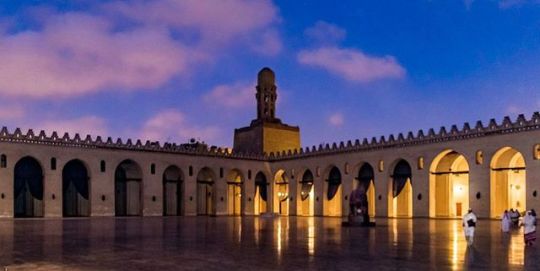
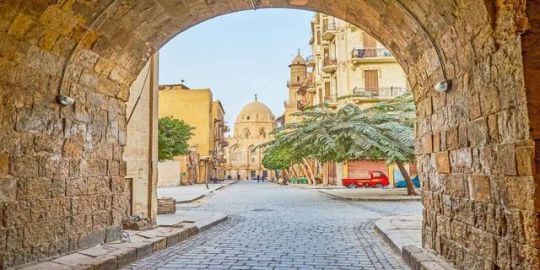

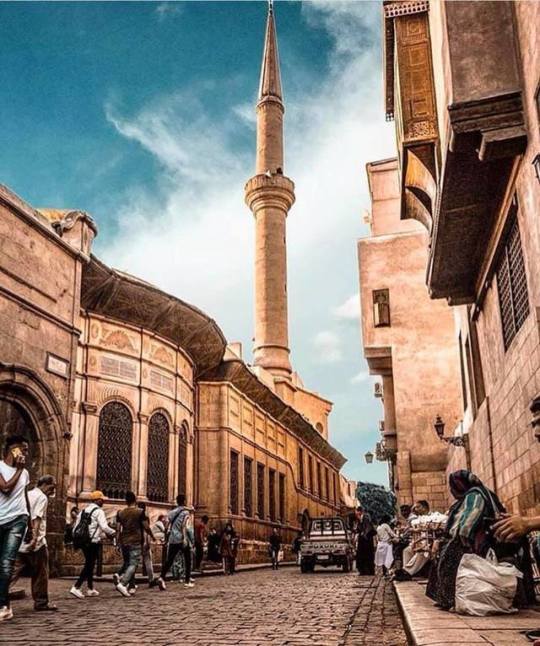
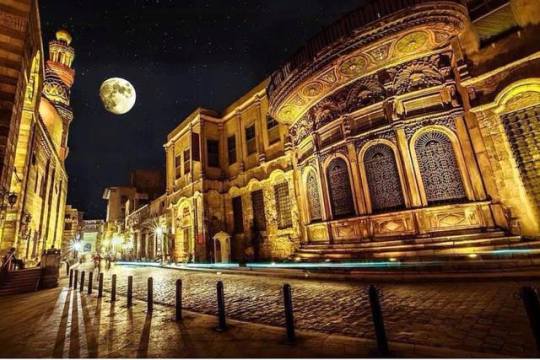
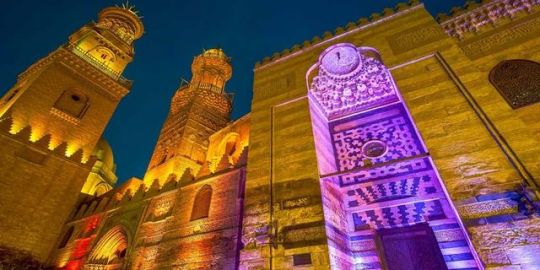
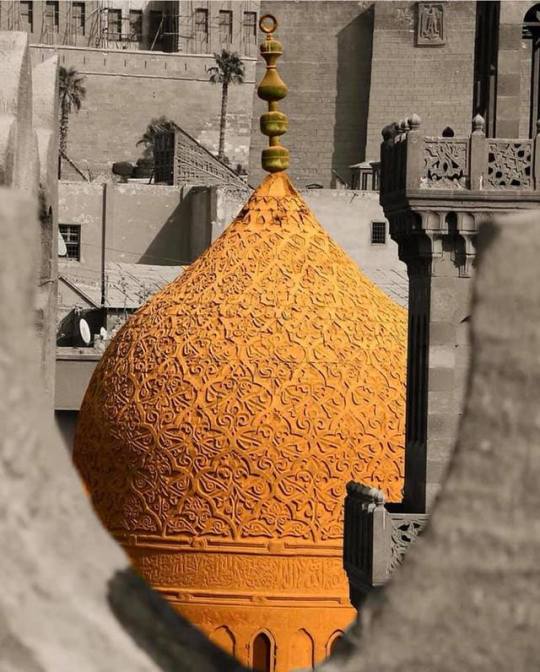
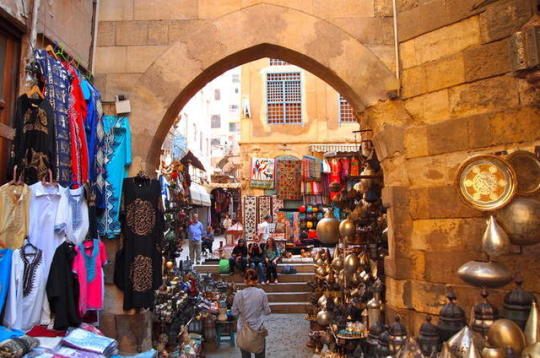
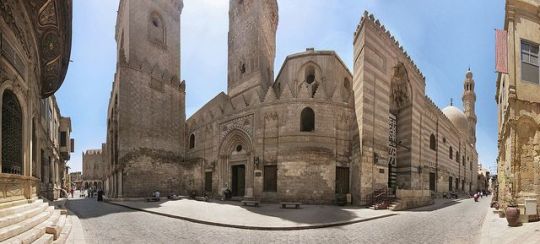
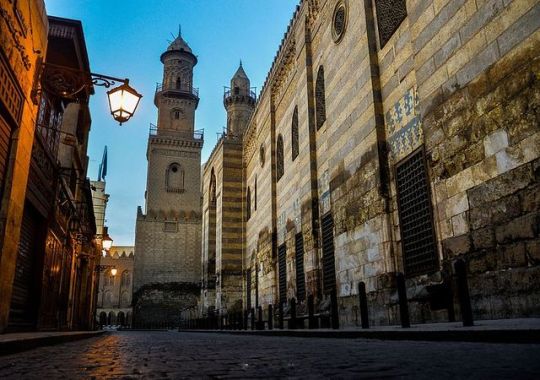
Muizz Street
Egyptian Arabic Shareʻ El Muizz, full name; Shariʻa al-Muizz li-Din Illah), also known as Al Moez Ldin Allah Al Fatimi Street in
Islamic Cairo , Egypt
is one of the oldest streets in Cairo, approximately one kilometer long. A United Nations study found it to have the greatest concentration of medieval architectural treasures in the Islamic world.
The street (shariʻa in Arabic) is named for Al-Mu'izz li-Din Allah , the fourth caliph of the Fatimid dynasty . It stretches from Bab Al-Futuh in the north to Bab Zuweila in the south. Starting in 1997,
The national government carried out extensive renovations to the historical buildings, modern buildings, paving, and sewerage to turn the street into an "open-air museum". On April 24, 2008, Al-Muizz Street was rededicated as a pedestrian only zone between 8:00 am and 11:00 pm; cargo traffic will be allowed outside of these hours.
The northern part of the street extends from the Al-Hakim Mosque in the north to the Spice Market at Al-Azhar Street and includes the antiques markets section,
Al-Aqmar Mosque (one of the few extant Fatimid mosques), the Qalawun complex and several well preserved medieval mansions and palaces.The southern part extends from the Ghuriya complex to the Bab Zuweila and includes the magnificent Tent Market in the Gamaliya district. Historical buildings of Muizz StreetMap of the northern part of Muizz StreetThe area around Muizz Street as well as the main street itself contain many historical buildings ranging from the era of Amr Ibn El As
to the Tulunid Period , the Fatimid, Ayyubid , Mamluk,Ottoman over to the Muhammad Ali Era
Seen from the north of the Muizz Street down to the south the following buildings still exist on the street or near it:
· Mosque of Al Hakim bi Amr Allah (1013)
· Wikala of Qaytbay (1481)
· Mausoleum of Ahmad Al-Qazid (1335)
· Wikala of Qawsum (1330)
· Sabil-Kuttab of Oda Bashi (1673)
· Mosque of Abu Bakr Muzhir (1480)
· Mosque of Sulayman Agha al-Silahdar (1839)
· Bayt al-Suhaymi (1648-1796)
· Sabil Qitas (1630)
· Khanqah of Baybar al-Gashankir (1310)
· Mosque of al-Aqmar (1125)
· Madrasa of Qarasunqur (1300)
· Sabil-Kuttab and Wikala of Dhu'l Fiqar (1673)
· Sabil-Kuttab of Abdel Rahman Katkhuda (1744)
· Mosque of Gamal al-Din Ustadar (1407)
· Musafirkhana Palace (1788)
· Qasr Bashtak (1339)
· Madrasa of Amir Mithqal (1363)
· Mosque of Mahmoud Moharram (1792)
· Sabil of Ismail Pasha (1828)
· Madrasa of Al-Kamil Ayyub (1229)
· Madrasa of Barquq (1386)
· Madrasa of Tatar Al-Higaziya (1348)
· Qa'a of Al-Muwaqqi (1350)
· Madrasa of Al-Nasir Muhammad (1304)
· Complex of Qalawun (1285)
· Maq'ad Of Mamay Al-Sayfi (1496)
· Mosque of Taghri Bardi (1440)
· Sabil-Kuttab of Khusraw Pasha (1535)
· Madrasa of Al-Salih Ayyb (1250)
· Sabila-Kuttab Ali Ibn Hayz (1646)
· Wikala of Gamal Al-Din Al-Dhahabi (1637)
· Sabil-Kuttab of Ahmad Pasha (1864)
· Mosque of Sayyidna Al-Husseyn (1154)
· Wikala of Sulayman Agha Al-Silihdar (1838)
The southern part of Muizz Street area after the intersection with Al-Azhar Street contain the following historical buildings:
· Mosque of Al-Ashraf Barsbay (1425)
· Mosque of Shaykh Ali Al-Mutahhar (1744)
· Mosque of Al-Azhar (970)
· Mosque of Abu Dahab (1774)
· Madrasa of Sultan Al-Ghuri (1505)
· Mausoleum of Sultan Al-Ghuri (1505)
· Wikala of Al-Ghuri (1505)
· Sabil-Kuttab and Wikala of Qaytbay (1477)
· House of Zaynab Khatun (1713)
· House of Sitt Wasila (1664)
· House of Al-Haraw (1731)
· Mosque of Al-Ayni (1411)
· House of Gamal Al-Din Al-Dhahabi (1634)
· Fakahani Mosque (1735)
· Sabil of Tusun Pasha (1820)
· Mosque of Muayyad (1420)
· Wikala and Sabil of Nafisa Bayda (1796)
· Takiya of Al-Gulshani (1524)
· Zawiya of Farag Ibn Barquq (1408)
· Mosque of Salih Tala'i (1160)
· Qasaba of Radwan Bey (1650)
7 notes
·
View notes